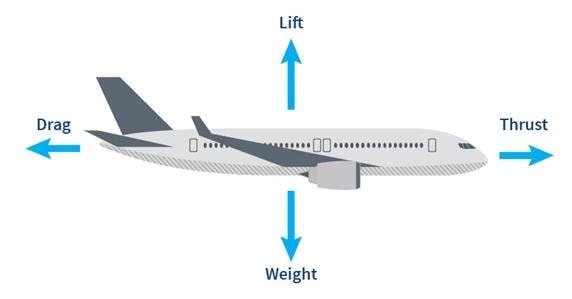What Makes An Airplane Fly?
Everyone fascinated with flying surely started as a child asking simple questions which strangely were right into the point. The obvious answers would be that airplanes fly because they have wings, propellers, engines and pilots. Knowing how these four elements work altogether however would be incomplete without knowing the science behind which brought us what came to be known as the theory of flight.
Daniel Bernoulli's Influence
The fascinating aspect of life is that we usually base our applied science from the discoveries of wise men who have lived centuries before us. Daniel Bernoulli lived from 1700 to 1782 and it would take more than a century later when the first airplane as invented by the Wright Brothers would take flight but how he was credited for publishing "Hydrodynamica" in 1738 became the central idea which provided the basis for the theory of flight. So came to be known “Bernoulli's Principle” maintaining that fluid pressure decreases as the velocity increases. Applying this principle to air as it moves around the wing gives rise to the element of “lift”which contributes to the phenomenon we call flight.
The 4 Forces Acting on An Aircraft in Flight
The lifting force needed to lift an airplane to keep it on the air is just one of the four forces that makes flight possible. Unpowered flights as demonstrated by gliders before the airplane was invented validated this, however an opposing force (as Newton's Third Law of Motion dictates),”weight” causes gliders to return to the ground after losing lift when the wind slows down. So it wasn't until a working engine was invented to be integrated into a glider that the concept of a working airplane with controls was conceptualized. The engine spinning a propeller in front of the airplane accounts for the third force called “thrust” pulling it forward through the air and the opposing force resulting from this,“drag” completes the puzzle which makes powered flight possible. On take-off or in initiating a climb, thrust works at maximum (greater than drag), lift is also maximized exceeding the airplane's overall weight allowing the whole aircraft to gain altitude. In cruising or straight and level flight, lift equals weight and thrust exceeds drag in order for the airplane to move forward. In order to land the airplane, the pilot decreases the power on the engine allowing for the thrust from the propeller to work just enough to support the airplane to glide at its own weight and align to the nearest runway for landing.
References:
Bernoulli, Daniel. Encyclopædia Britannica. Encyclopædia Britannica Ultimate Reference: https://www.britannica.com/biography/Daniel-Bernoulli
The Four Forces of Flight - NASA
https://www.nasa.gov/audience/foreducators/k-4/features/F_Four_Forces_of_Flight.html#:~:text=These%20same%20four%20forces%20help,air%2C%20lift%20holds%20it%20up.
Forces on an Airplane - Glenn Research Center
https://www.grc.nasa.gov/www/k-12/airplane/forces.html
Posted with STEMGeeks


I smiled when I read your comment "The fascinating aspect of life is that we usually base our applied science from the discoveries of wise men who have lived centuries before us."
My passion is electricity & electronics and many of the "laws" that we follow (Ohm's & Kirchoff's Laws for example) were derived centuries before us and using equipment & tools that were very rudimentary! A real testament to the brilliance of those folks!